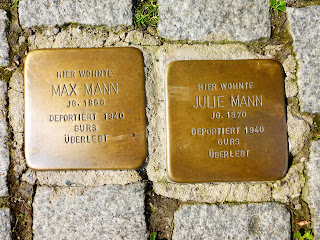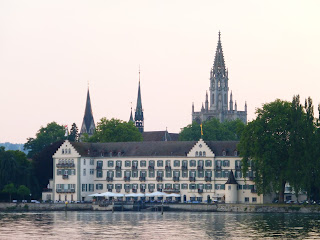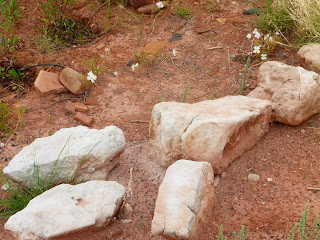Our decision to explore the
California Gold Country happened a bit by chance. We spent a day
exploring Yosemite National Park and then headed west without
reservations for the night. (Lodging in Yosemite is booked many
months in advance, next time we'll plan ahead.) We drove along the
Mariposa Scenic Byway 32 miles to Mariposa (pop. 2100). This is one
of the closer towns to the park and happens to sit at the south end
of Highway 49, a perfect starting point for a drive north toward
Nevada City through the heart of the California Gold Country.
James Marshall discovered gold
in the Sacramento River, and the gold rush began. It was 1849, and
the arriving miners, known as the “forty-niners”, were coming to
strike it rich. The California Gold Rush was one of the greatest
migrations for the search of riches in the history of the world—more
than 300,000 men (and a few women) crowded into the wilderness of
Sierra Nevada in search of gold. Coming from China, Chile, Europe,
Mexico, Canada, Central America, Australia, and the US, it was truly
an international event that lasted for ten years. The heart of the
gold country, where miners sought their Mother Lode, was along the
western slopes of the Sierra Nevada foothills. It stretched from
Nevada City in the north to Mariposa in the south, which is where our
road tour begins.
* * *
We arrived in Mariposa after dark
on this cool October and found lodging. I was anxious to head out
the next morning for a stroll along the main street of this
once-prosperous mining center. A highlight was my stop at the
Mariposa Museum and History Center, which contains dozens of
reconstructed interiors shown just as they were in the
mid-1800s—including a sheriff's office, saloon, piano room, and a
miner's cabin. The friendly staff made it all the more informative
and fun to visit. I found a locally handmade rag doll in the gift
shop for Mila's Xmas stocking. Rag dolls are easily made from scraps
of material and are one of the most ancient children's toys in
existence.
While I enjoyed the museum, Ron
was happily working and enjoying the best hamburger of the trip at
the Happy Burger Diner which was directly across the street.
After leaving here, we decide to
drive north on the steep and windy roads of Highway 49, stopping to
explore the dozens of small historic mining towns along the way—many
of which have not changed much since the 19th century.
 |
| CHINESE CAMP |
One of our first stops is ChineseCamp (pop. 126); home to 5,000 Chinese in the 1850s. One of every ten
miners was Chinese. After the initial boom had ended, anti-foreign
taxes and racist attacks sought to drive out foreigners—especially
Chinese and Latin American immigrants. Many gravitated to San
Francisco, where one of the largest Chinatowns outside of Asia exists
today.
Next we drive about seven
miles north to Jamestown (pop. 3400) in Tuolumne County that offers a
restored and picture-perfect main street with many of the false-front
buildings still standing. It is in this county that over 350
productions have been filmed including Butch Cassidy and the
Sundance Kid, Gunsmoke, High Noon, and Bonanza.
Commercialism has crept in with many restaurants, antique stores, and
gift shops. However, you still get a strong sense of the past
here—just as you do in all of these small historic towns along
Highway 49.
On the
second night, we stayed near Sonora (pop 4800). This is one of the
best preserved towns on the route. I picked up a brochure in the
tourist office that highlights a walking tour of over 70 historical
sites and homes in the town. I spent some time strolling around and tracing
history through architecture until they all started looking a bit
alike. I then entered the Tuolumne County Museum that was built in
1857 as the old county jail. It was rebuilt in 1866 after a fatal
fire set by an inmate and continued to be in use until 1960. It was
another well-done museum in this area that provided a private tour of
the old jail cell, photograph collections, and a lot of interesting
trivia. Before jails were built, there were public lynchings that
became major events attended by all the townspeople—sometimes, with
all of the drinking going on, even more killings occurred.
A modest
number of miners were of African ancestry (about 4,000 at most) and
came as free men. However, some were brought as slaves. One of the
“laws” in prospecting was that the gold belonged to the man who
discovered it. This provided a way for slaves to earn money during
their off-hours. Many bought their freedom during the gold rush as a
result of this policy.
 |
| MURPHYS - TASTING ROOM |
As we
drove further north, we discovered more and more wineries in the
historic towns and surrounding countryside. Murphys (pop. 2,213) was
established by two Irishmen back in 1848, and its historic Main
Street is interspersed with 25 charming tasting rooms. We enjoyed a
stop at the Frog's Tooth Winery. Most of the wineries offer free
tastings provided you purchase a bottle of wine. Consequently, we
arrived home with a half dozen colorfully labeled wine bottles to
help us reminisce about our visit to the old west and a step back in
time.




















































